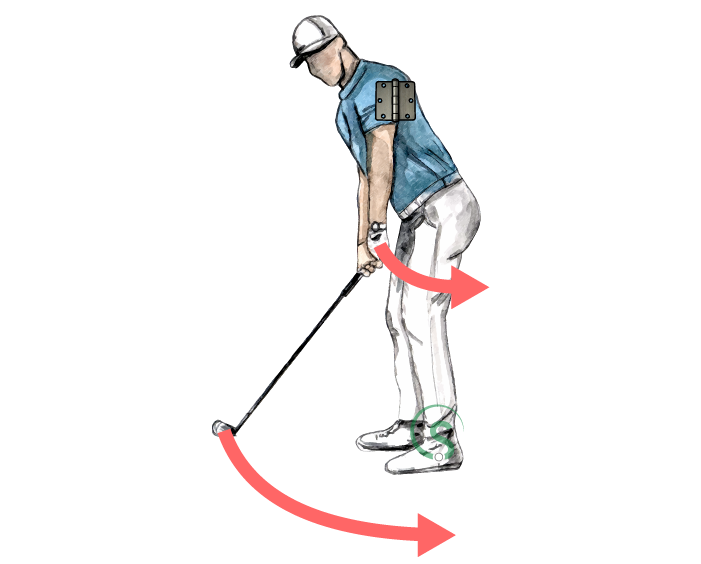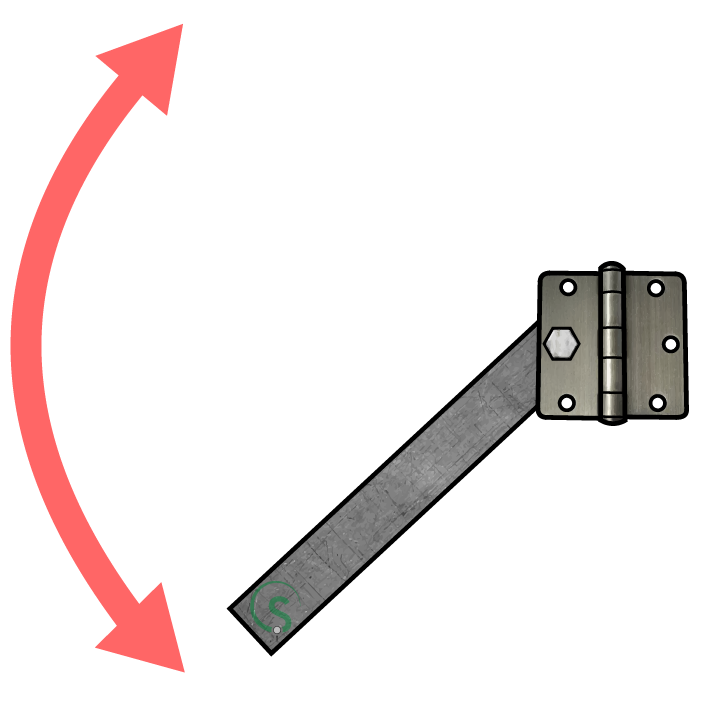Horizontal Hinge Action
Imagine for a moment a hinge installed on your left shoulder, connecting the left arm to your body. The orientation of that hinge would determine the plane of motion your left arm could make. With horizontal hinge action, the hinge would be installed just as they are with regular doors. The hinge pin would be vertical allowing a range of motion on a horizontal plane.
With horizontal hinge action, the left arm isn’t be able to move up or down. This means post-impact, the clubhead remains on the ground and traces a circle as the left arm and club rotate around the left shoulder on a horizontal plane.(1) Assuming your left wrist at impact is flat(2) and also perpendicular to the ground,(3) it will remain likewise throughout the Hinge Action.
With horizontal hinge action, the left arm isn’t be able to move up or down. This means post-impact, the clubhead remains on the ground and traces a circle as the left arm and club rotate around the left shoulder on a horizontal plane.(1) Assuming your left wrist at impact is flat(2) and also perpendicular to the ground,(3) it will remain likewise throughout the Hinge Action.

As the left wrist remains in its flat and vertical alignment, the horizontal hinge action will cause the clubface to close without laying back. This hinge action, as you may have gathered, is limited in its usefulness. Aside from being physically difficult to keep the clubhead stuck to the ground post impact, this hinge action would cause you to disobey the Third Imperative,(4) swinging the clubshaft on a straight plane line.
So what good is horizontal hinge action, if by using it, we can’t obey the Third Imperative? With a small adjustment we can, and horizontal hinge action becomes very useful indeed.
So what good is horizontal hinge action, if by using it, we can’t obey the Third Imperative? With a small adjustment we can, and horizontal hinge action becomes very useful indeed.

Imagine now your left arm attached to the hinge with a single bolt. Now the arm is able to move up and down as well as rotate around the hinge. With this configuration, the left hand will again remain flat and vertical. However, because the arm has the freedom to move up and down we can keep the clubshaft on-plane and obey the Third Imperative. This is known as dual horizontal hinge action.(5)
